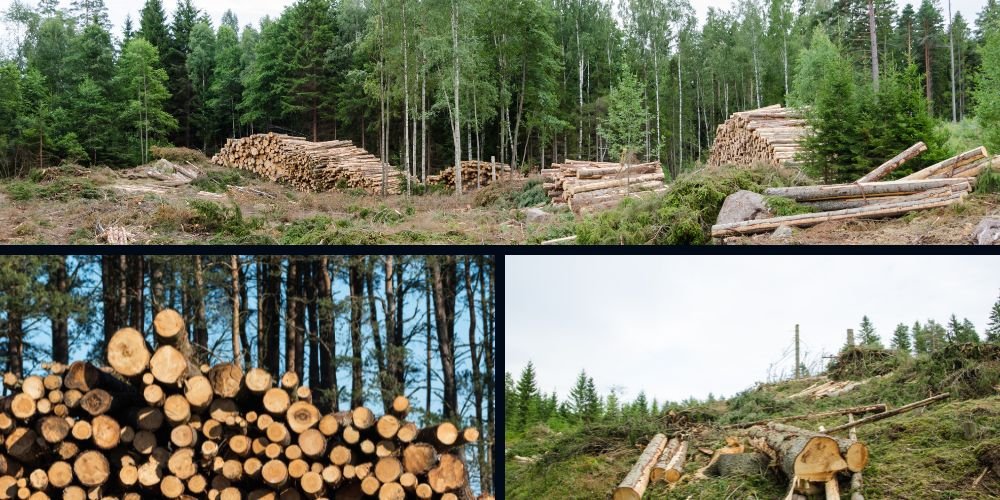Sustainable forestry is a vital approach that stands at the forefront of responsible natural resource management, ensuring the long-term health and vitality of the world’s forests. This article delves into the comprehensive realm of sustainable forestry, exploring its fundamental principles, diverse methodologies, key advantages, notable applications, and the challenges it addresses within the dynamic landscape of environmental stewardship and global climate action.
Unveiling Sustainable Forestry
Sustainable forestry involves the responsible and ethical management of forests to balance ecological, economic, and social considerations. The primary objective is to ensure that the extraction of wood and other forest products occurs at a rate that allows ecosystems to regenerate, maintaining biodiversity, soil health, and the overall resilience of forest ecosystems. It recognizes the interconnectedness of forests with climate regulation, water cycles, and the livelihoods of local communities.
Key Components of Sustainable Forestry
Understanding the key components of sustainable forestry is essential for comprehending its scope and impact:
- Ecosystem-Based Management: Sustainable forestry adopts an ecosystem-based management approach, considering the entire forest ecosystem rather than focusing solely on individual trees or specific products. This approach promotes the health and resilience of the entire forest ecosystem.
- Biodiversity Conservation: Conserving biodiversity is a fundamental aspect of sustainable forestry. Efforts to protect and enhance the diversity of plant and animal species within forests contribute to ecosystems’ overall stability and adaptability.
- Community Engagement: Involving local communities in sustainable forestry practices is crucial for the long-term success of conservation efforts. Collaborative approaches that empower communities to participate in decision-making and sustainable resource management foster a sense of stewardship.
Methodologies of Sustainable Forestry
Sustainable forestry employs various methodologies to strike a balance between human needs and the preservation of forest ecosystems:
- Selective Logging: Sustainable forestry often involves selective logging, where only specific trees are harvested instead of clear-cutting entire forests. This approach minimizes the impact on the overall ecosystem, allowing for forest regeneration.
- Silviculture Practices: Silviculture, or the cultivation of trees, involves planting, pruning, and thinning to manage forest growth. These practices aim to maintain or enhance forest ecosystems’ health, quality, and productivity.
- Certification Programs: Forest certification programs, such as those provided by organizations like the Forest Stewardship Council (FSC), set standards for sustainable forestry practices. Certified products ensure consumers that the wood comes from responsibly managed forests.
Advantages of Sustainable Forestry
The adoption of sustainable forestry brings forth a multitude of advantages, shaping the way forests are managed and ensuring their continued contribution to the well-being of the planet:
Climate Change Mitigation and Carbon Sequestration
One of the primary advantages of sustainable forestry is its contribution to climate change mitigation. Forests act as carbon sinks, absorbing and storing large amounts of carbon dioxide. Its practices enhance carbon sequestration, helping combat the impacts of climate change.
Biodiversity Conservation and Habitat Protection
Sustainable forestry actively contributes to biodiversity conservation by protecting habitats and promoting diverse ecosystems. It preserves the richness of plant and animal life and ensures the resilience of forests in the face of environmental changes.
Economic Viability and Community Well-being
Sustainable forestry practices are economically viable, providing a long-term source of income for communities that depend on forests. By promoting responsible harvesting and community engagement, sustainable forestry enhances the well-being of local populations.
Soil and Water Conservation
Sustainable forestry safeguards soil health and water resources. Practices like reduced-impact logging and maintaining riparian buffers prevent soil erosion, protect water quality, and contribute to the overall health of watersheds.
Applications of Sustainable Forestry
Sustainable forestry finds applications across diverse contexts, influencing how forests are managed and how societies interact with their natural surroundings:
Eco-Friendly Wood Products and Responsible Consumption
The production of eco-friendly wood products is a direct application of sustainable forestry. Products certified by recognized organizations assure consumers that the wood comes from responsibly managed forests, encouraging responsible consumption and supporting sustainable supply chains.
Agroforestry and Integrated Land Use
Agroforestry, the integration of trees and shrubs into agricultural landscapes, is an application of sustainable forestry. This approach enhances biodiversity, improves soil fertility, and provides additional sources of income for farmers while promoting sustainable land use.
Restoration Ecology and Reforestation Projects
Sustainable forestry practices play a crucial role in restoration ecology and reforestation projects. Rehabilitating degraded areas, planting native tree species, and implementing sustainable management contribute to restoring ecosystems and enhancing biodiversity.
Forest Conservation Policies and Legislation
Government policies and legislation focused on forest conservation often incorporate sustainable forestry principles. These regulations aim to prevent illegal logging, protect critical habitats, and promote responsible forest management.
Challenges in Sustainable Forestry
While the advantages are evident, the practice of sustainable forestry faces its own set of challenges. Addressing these challenges is important for realizing the full potential of sustainable forestry efforts:
Illegal Logging and Enforcement Issues
Illegal logging remains a significant challenge to sustainable forestry. Weak enforcement of regulations, corruption, and the demand for cheap timber contribute to the persistence of illegal logging practices.
Land Use Conflicts and Deforestation Pressures
Land use conflicts and pressures from deforestation pose threats to sustainable forestry. As global demand for land and resources increases, forests face the risk of conversion for agriculture or infrastructure development.
Global Trade and Market Dynamics
Global trade dynamics and market forces can undermine sustainable forestry efforts. The demand for inexpensive wood products may drive unsustainable practices, especially in regions with limited regulatory oversight.
Climate Change Impacts on Forest Health
The impacts of climate change, including improved temperatures, altered precipitation patterns, and the spread of pests and diseases, can affect the health and resilience of forests, posing challenges to sustainable forestry practices.
Future Trends in Sustainable Forestry
As technology continues to evolve, future trends in sustainable forestry point toward advancements that further enhance its capabilities:
Digital Technologies for Monitoring and Management
Digital technologies, including satellite imagery, remote sensing, and data analytics, are becoming integral for monitoring and managing forests. These tools enable real-time assessment of forest health, illegal logging detection, and precise planning for sustainable forestry practices.
Climate-Smart Forestry Practices
Climate-smart forestry practices are emerging as a future trend. These practices involve adapting forest management strategies to climate change, enhancing the resilience of forests, and ensuring their continued contribution to global climate regulation.
Circular Economy Models for Forest Products
Circular economy models for forest products are gaining prominence. Future trends involve exploring ways to extend the lifespan of wood products, promote recycling, and reduce overall waste in the forestry value chain.
Indigenous Knowledge Integration and Collaboration
Integrating indigenous knowledge and fostering collaboration with indigenous communities are future trends in sustainable forestry. Recognizing indigenous peoples’ traditional ecological knowledge enhances conservation efforts’ effectiveness and promotes cultural sustainability.
Conclusion
Sustainable forestry is a cornerstone in the ongoing effort to balance human needs with preserving the world’s vital forests. Its role in mitigating climate change, conserving biodiversity, and supporting the well-being of local communities is paramount. While challenges persist, ongoing advancements and future trends indicate a dynamic and promising future for sustainable forestry, with applications extending into new frontiers of technology, community engagement, and global collaboration. The responsibility to protect and nurture the Earth’s green lungs for a resilient future remains a shared commitment, urging concerted efforts to ensure the sustained health and vitality of our planet’s precious forests.











